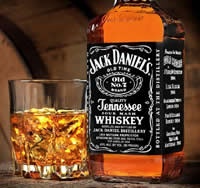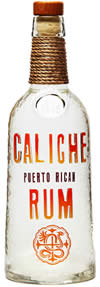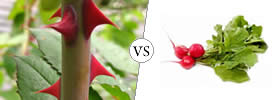Difference between Whiskey and Rum
Key Difference: Whiskey or whisky is a type of distilled alcoholic beverage made from any form of fermented grain mash. Depending on the geographical region or type of whiskey that is being made, whiskey can be made from barley, malted barley, rye, malted rye, wheat, and corn. They are often aged in charred barrels. Rums are distilled alcoholic beverages made from sugarcane byproducts such as molasses or sugarcane juices. Similar to most alcoholic beverages, rums must go through the process of distillation, fermentation and aging.
Whiskey and rum are two different types of alcoholic beverages that are made using different ingredients. They are often confused as they have similar color and appearance; however they differ in taste and flavoring.
 Whiskey or whisky is a type of distilled alcoholic beverage made from any form of fermented grain mash. Depending on the geographical region or type of whiskey that is being made, whiskey can be made from barley, malted barley, rye, malted rye, wheat, and corn. They are often aged in charred barrels. According to Wikipedia, the word ‘whiskey’ is the anglicisation of the Gaelic word ‘uisce|uisge’ meaning “water”. Distilled water was known in Latin as aqua vitae meaning “water of life”. The process of distillation can be dated back to the Greeks in Alexandria around the 3rd century AD; however they did not distill alcohol only spirits for fragrance purposes. The distillation process was passed down through the ages to Italy in the 13th century AD where the first distillation process of alcohol took place and alcohol was distilled from wine. The alcohol was originally used for medicinal purposes before it become consumable as a beverage. Whiskey first become popular as a beverage in Scotland before it spread to other neighboring countries.
Whiskey or whisky is a type of distilled alcoholic beverage made from any form of fermented grain mash. Depending on the geographical region or type of whiskey that is being made, whiskey can be made from barley, malted barley, rye, malted rye, wheat, and corn. They are often aged in charred barrels. According to Wikipedia, the word ‘whiskey’ is the anglicisation of the Gaelic word ‘uisce|uisge’ meaning “water”. Distilled water was known in Latin as aqua vitae meaning “water of life”. The process of distillation can be dated back to the Greeks in Alexandria around the 3rd century AD; however they did not distill alcohol only spirits for fragrance purposes. The distillation process was passed down through the ages to Italy in the 13th century AD where the first distillation process of alcohol took place and alcohol was distilled from wine. The alcohol was originally used for medicinal purposes before it become consumable as a beverage. Whiskey first become popular as a beverage in Scotland before it spread to other neighboring countries.
There are various different types of whiskey and they differ in terms of base product, alcoholic content and quality. The main two types include malt whisky and grain whisky. Malt whisky is made primarily from malted barley, while grain whisky is made from any type of grain. Malting is when the grain is put under the process of germination. Germination requires the barley being placed in water for a certain amount of time and being constantly turned to ensure proper soaking. Whiskies can further be classified under:
- Single malt whisky: is whisky that is from a single distillery and is made from a mash that uses only one particular type of malted grain.
- Blended malt whisky: is a blend of different malt whiskies from different distilleries.
- Blended whiskies: is whiskey that is made from a mixture of malt and grain whiskies along with neutral spirits, caramel, and flavoring.
- Cask strength: These whiskies are bottled directly from the cask and are undiluted or only a little diluted. These are rare whiskies.
- Single cask: Each bottle of a single barrel whiskey is from an individual cask with the cask number labeled on the bottle.
Whiskies must be strengthened and aged in a barrel. They do not mature in the bottle, hence if a person keeps the whiskey bottle over a long time, it would not become any stronger in flavor or alcohol content. The alcohol content and mash content varies depending on the regulations of the geographic region. The whiskies require a charred oak barrel during the aging process, which provides them with the golden brown and amber coloring. Additional flavors and colors can be added to the alcohol depending on the regulations.
 Rums are distilled alcoholic beverages made from sugarcane byproducts such as molasses or sugarcane juices. Similar to most alcoholic beverages, rums must go through the process of distillation, fermentation and aging. Depending on the geographical region of the product, rums differ in taste, color and strength. The origin of the term ‘rum’ is unclear and there are various different possibilities as to how the name came by. British etymologist, Samuel Morewood in his 1824 essay stated that the word ‘rum’ was a British slang term from “the best”. Morewood also suggested another possibility that the word was taken from the last syllable of the Latin word, “saccharum”, meaning “sugar”. Other possibilities include the word being derived from other popular British drinks of the time such as ramboozle and rumfustian.
Rums are distilled alcoholic beverages made from sugarcane byproducts such as molasses or sugarcane juices. Similar to most alcoholic beverages, rums must go through the process of distillation, fermentation and aging. Depending on the geographical region of the product, rums differ in taste, color and strength. The origin of the term ‘rum’ is unclear and there are various different possibilities as to how the name came by. British etymologist, Samuel Morewood in his 1824 essay stated that the word ‘rum’ was a British slang term from “the best”. Morewood also suggested another possibility that the word was taken from the last syllable of the Latin word, “saccharum”, meaning “sugar”. Other possibilities include the word being derived from other popular British drinks of the time such as ramboozle and rumfustian.
Majority of the rum in the world is produced in the Caribbean and Latin America, with selected other countries such as India, Spain, New Zealand, Mexico, etc. also partaking in producing the beverage. Rum was first distilled on a sugarcane plantation in the Caribbean during the 17th century. The slaves at the plantation discovered that molasses, a byproduct of sugarcane when it is refined into suger, could be fermented into alcohol. Other places to record early rum distillation include Brazil and Barbados. After the development of rum, it grew fast in demand and it was also used in many places as currency. To support the increasing demand of sugar, labor was required to work the sugar plantations. This resulted in the establishment of the triangular trade between Africa, the Caribbean and the European colonies. Rum also became popular with seamen and pirates.
Rum does not have any set production methods, with the methods varying depending on the region where the distillers are located. Similar to some other alcoholic beverages, rum goes through the process of fermentation of either molasses or sugarcane juice. During fermentation, the water and yeast is added to the base ingredient, allowing the yeast to break down the sugar. Depending on the type of yeast used for fermentation, the taste and aroma of the rum varies. After distillation, the rum is then put through the process of distillation. After distillation, the rum is required to be aged for at least one year in many countries. The aging process could be done in wooden casks (natural or charred) as well as in stainless steel tanks. The rum in the wooden casks is darker in appearance, while the rum in stainless steel tanks remains colorless. Caramel can also be added to rum to adjust the color of the final product before it is bottled.
According to Wikipedia, rum comes in certain grades and variations. They can be classified under the following:
- Light rums: Light rums are rums that are light or clear in color. They can also be referred to as white rum. They have very little flavor and are used in cocktails.
- Gold rums: Gold rums are also known as amber rums. They are often aged in charred white oak barrels. They have a stronger flavor compared to light rums.
- Dark rums: These are darker in color such as black, red or brown. They are aged for a longer period of time in heavily charred barrels. They may also have a hint of spices and caramel to adjust the color and flavoring. They are stronger and sweeter compared to the light and gold rums.
- Spiced rums: These rums obtain the flavor from spices or caramel. They are dark in color and may have spices such as cinnamon, rosemary, absinthe/aniseed, or pepper.
- Flavored rums: These rums are infused with additional flavors such as banana, coconut, citrus, etc.
- Overproof rums: These rums are higher in proof and ABV.
- Premium rums: These rums are high priced and are carefully aged and produced. They are said to have more flavor and taste.
Image Courtesy: questionisthisnormal.blogspot.com, blogs.ocweekly.com









Comments
why is the rum gone?
jack
Mon, 03/24/2014 - 07:28
Add new comment